|
Possibly the Brazilian embassy in Zagreb; certainly the Danish; and across the street from both, the Japanese. Embassies are
often just office space within buildings, not buildings themselves. These digs look pretty swank. As always, I wonder whether
the people working there think so. Is a Croatian posting a step in one's diplomatic career? This does look better than the
second-floor walkup the Brazilian embassy in Ljubljana is housed in. As for the Brazilian embassy in Maputo, the less said the better.
Not that I've entered any of these establishments. They're just easy to find because the flag is so conspicuous.
|
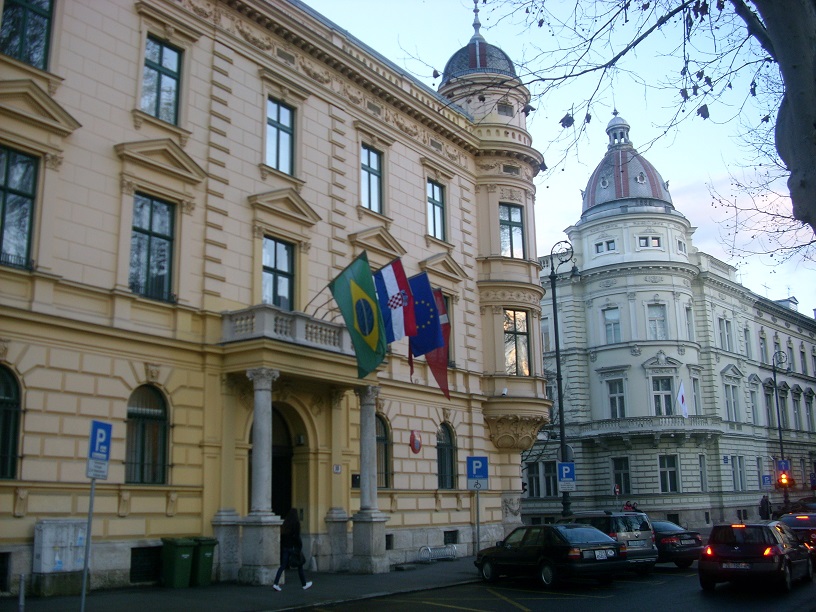
|
|
A rare example of Yugo-sculpture in downtown Zagreb. I say "rare" because other parts of the former Yugoslavia have quite a lot
of anguished municipal hardware lying around, still. Zagreb is in its prim Habsburg-heaviness comparable to Ljubljana yet the latter
outdoes it in oppressively metallic 20th-century art. I was unable to ascertain the name of this thing, but then it occurred to me
such things seldom come with explanations. They are true urban furniture.
|
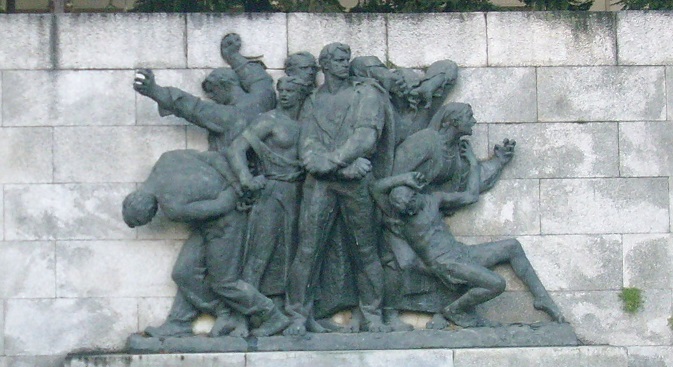
|
|
Saw this in the Zidani Most railway station, and was charmed, even though what caught my eye was at the very bottom of it:
"Participation at your own risk." For a children's masquerade party? With music supplied by a railway workers' band? Well,
I also liked what the masked chickens were saying: the one on the ladder is crying, "I can flyyyyy!", the chick on the wolf's
knee is wondering, "Mommy?", and of the cardplaying pair in the center, the more confused fowl is asking, "Checkmate?"
|
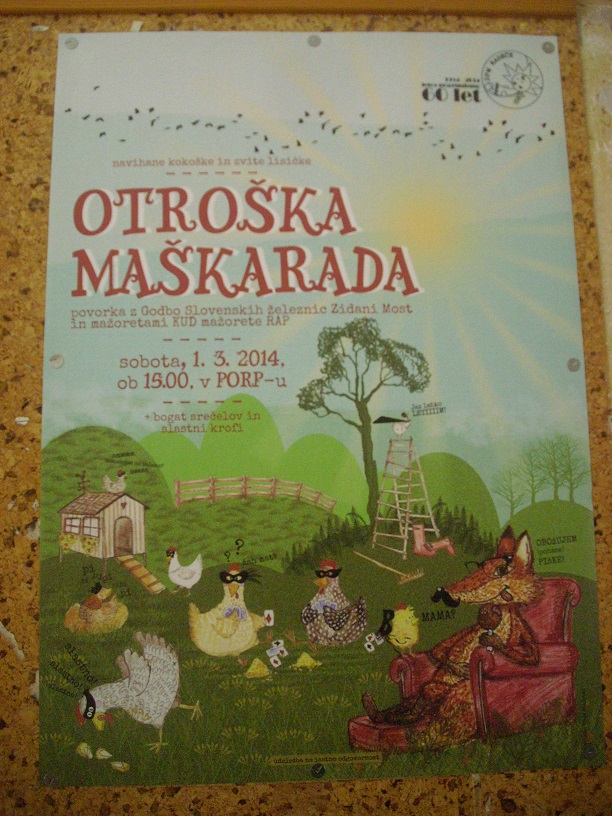
|
|
A WWII monument at the railway station in Zidani Most, though it could be anywhere in Slovenia. "Glory to those who fell
for freedom." The toppled votive candle is very unusual: these are almost always in working order, still lit after all these decades.
Talec means "hostage": the ones so marked were likely shot in captivity by the Germans. The Partisans were presumably killed in combat.
|
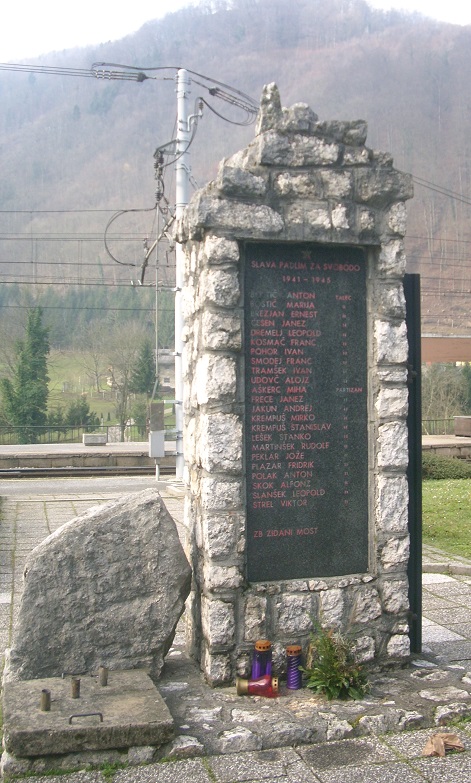
|
|
Along the Mirna River in the Sevnica District, "let's protect nature, don't dump trash!" And somebody Feels Love. It may be hard to
see, but "LOVE" is embedded in "sLOVEnija." Years ago, this wordplay was even on postage stamps, but only recently has it become the
official tourism-promoting slogan. Last I'd noticed, it was "Slovenia Invigorates."
|
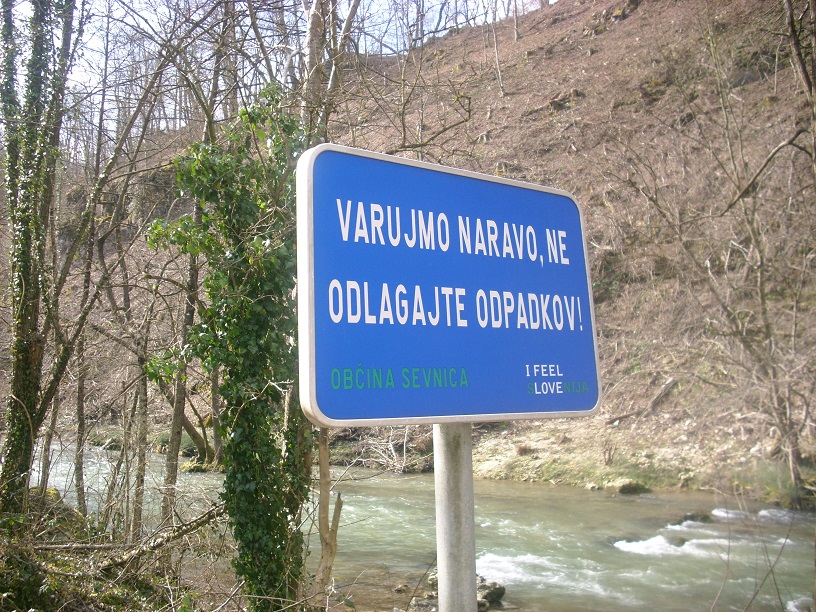
|
|
"Our City, Our Right!!!" Graffiti everywhere is wall-puke but in Europe at least it means something. CG92 is a local group of
soccer fans. "CG" I know stands for "The Counts of Celje," an allusion to the city's medieval nobililty, but the "92"
eludes me, since Slovenia's only significant year was 1991, the one of independence. Anyway, there was recently enacted a
Law Concerning Fans, which I believe empowered police to deal quite pre-emptively with hooligans, and that is probably what
is being complained about here.
|
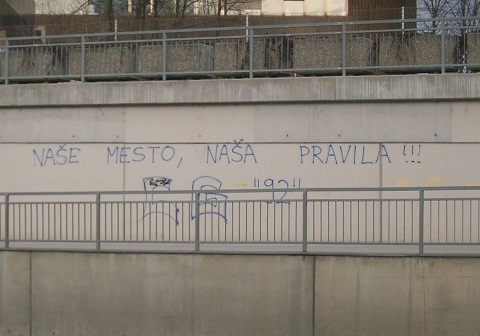
|
|
More "CG92" though not necessarily related to the competing inscription, which is "Here is Slovenia." I suppose the latter would be taken
as evidence of poisonous nationalism, boo-hiss-except-if-it's-Ukrainian-maybe, but since no American journalist reads Slovene, no one cares.
It was perhaps a mistake of that Bulgarian party to call itself Ataka, because even an American journalist can figure out what that means.
|
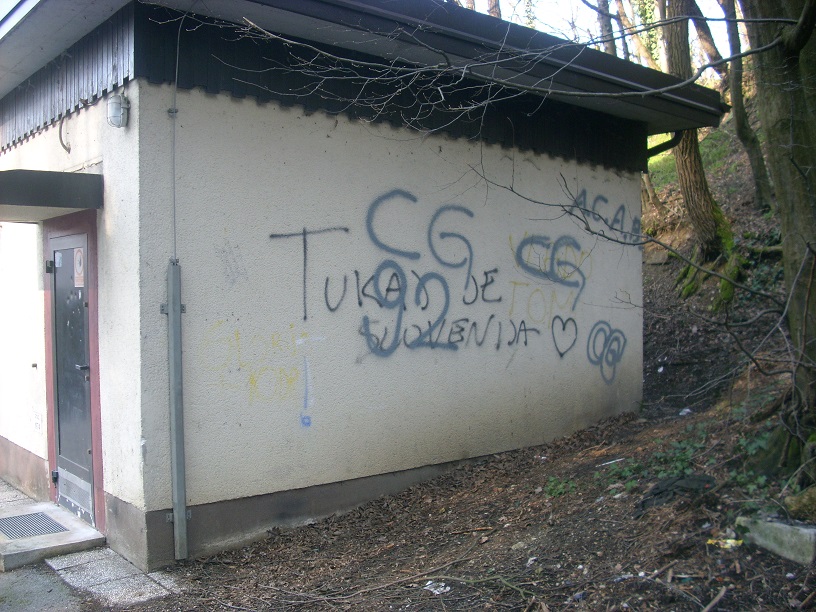
|
|
The essential Slovene portrait: a country church visible for miles, and those farm structures whose name I learned once and have never been
able to remember. They are used for drying corn.
|
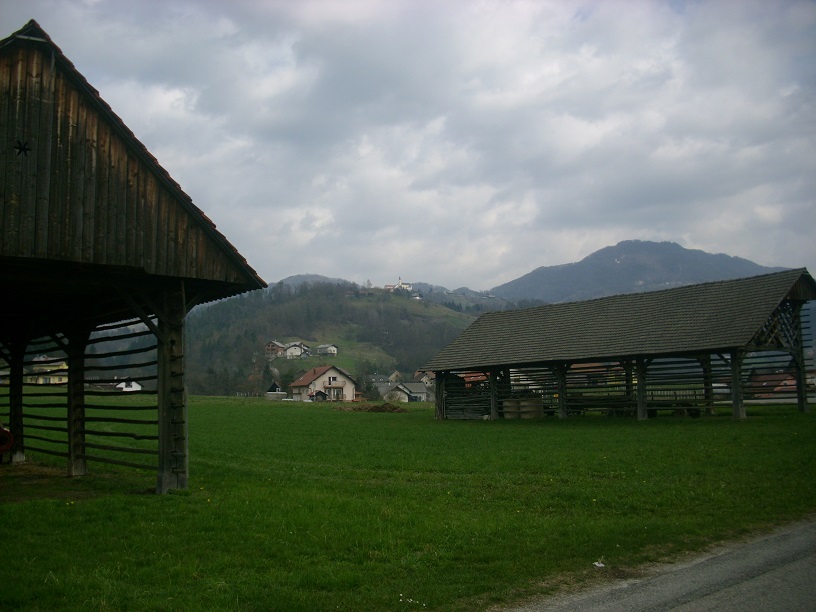
|
|
The Sava River, in central Slovenia. It will leave through the south of the country, pass through Zagreb in Croatia, and ultimately join
the Danube at Belgrade in Serbia. The Danube itself later serves, stoically I would have to guess, as Romania's border both with Bulgaria
and, just before discharging into the Black Sea, with the Ukraine.
|
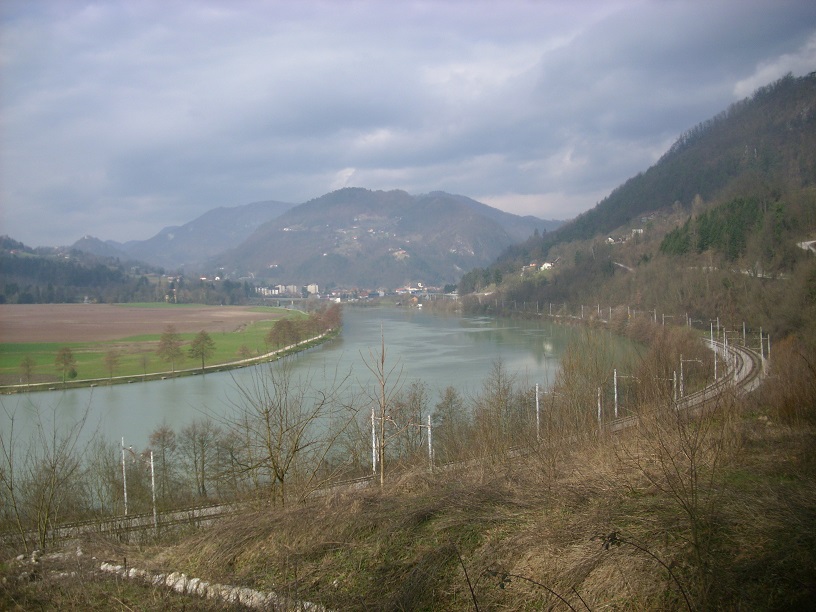
|
|
Looking southeast from Celje's Stari Grad, Old Castle. I glimpsed this structure on my first visit to Slovenia, in 2002: the train
from Maribor to Ljubljana passed beneath it, and while it looked impressive, I never verified how impressive until this trip. Until then,
the only other thing I knew about Celje is that a major hospital is there.
|
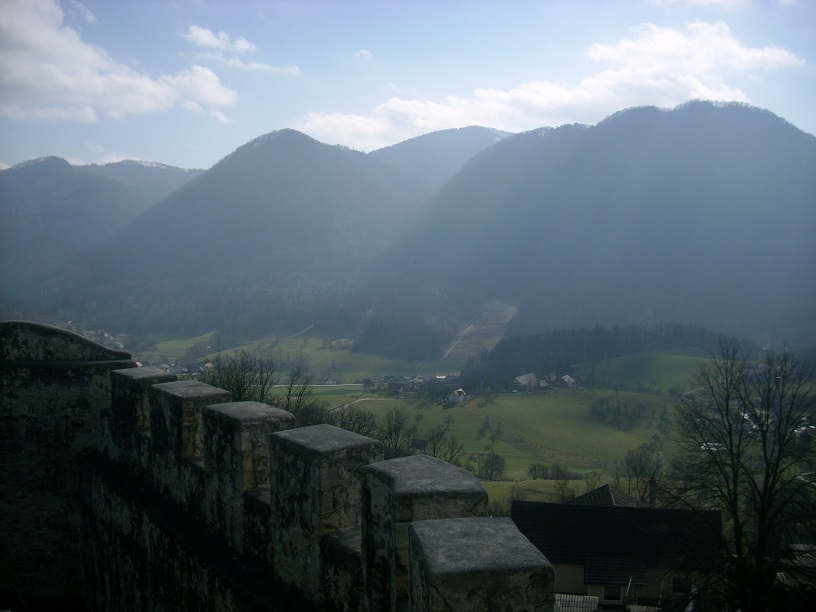
|
|
From the Old Castle above Celje, looking west over the Savinja River. About 20 miles down, this river joins the Sava.
|
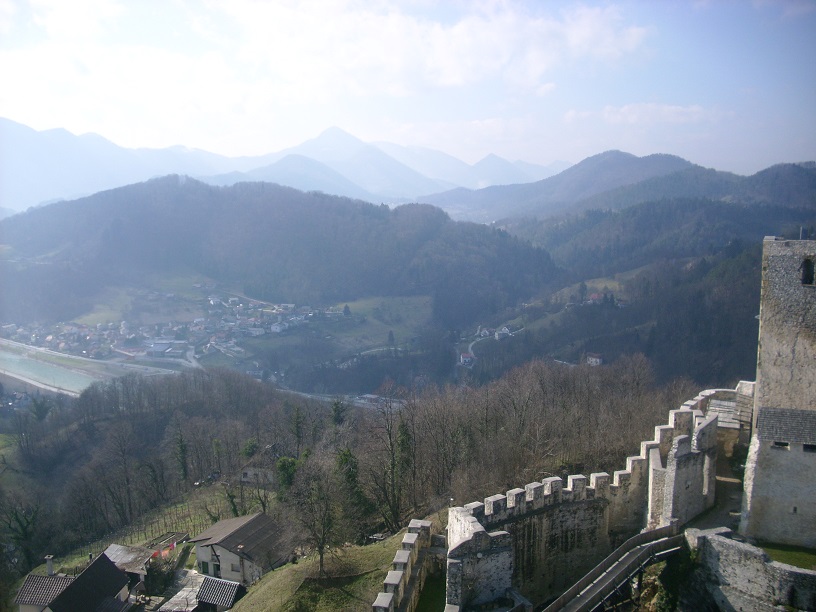
|
|
The Old Castle above Celje. Back when Europe celebrated diversity 'til it just couldn't celebrate no more, this area changed hands a
lot, and in the 1400's it seemed to make sense to build something like this in a place like this. (Maybe it made sense far far earlier:
not far down that river is a town called Rimske Toplice, "Roman Hot Springs.") Even with the lofty fortification, the hands-changing kept
happening. I was surprised that anyone would climb this high to duke it out, but all evidence suggests they would have climbed even
higher if need be. It contrasted oddly with something I heard while visiting Brazil's second-highest mountain, Pico da Bandeira.
I was told that during the last military dictatorship, rebels had grunted up the slopes with machine guns, which they took care to
maintain in firing condition while cleverly hiding them. But they never were used. The mountain was too far away from, too high above,
the nearest likely target, which was a commercially significant railway line. Life simply went on at the foot of the mountain. Well,
maybe in Brazil, but not in Slovenia!
|
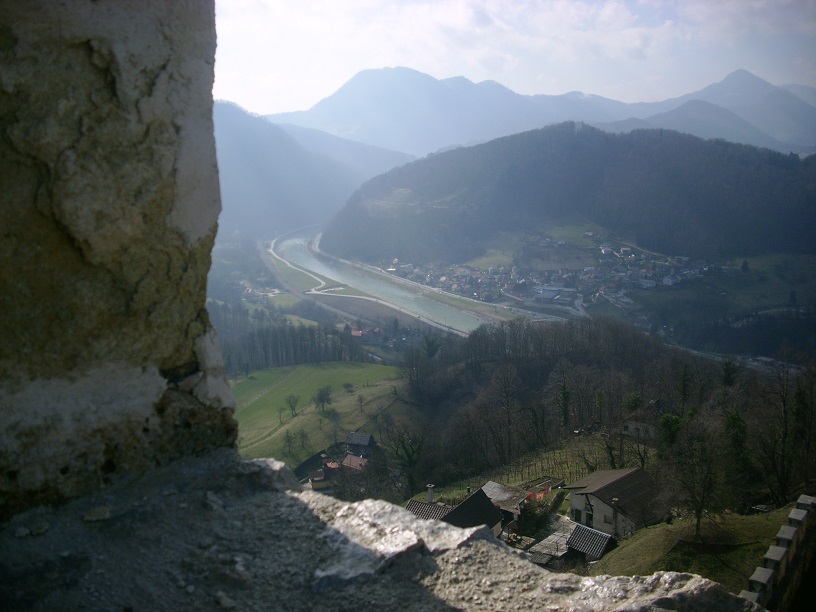
|
|
One more view from the heights of the Old Castle. In Celje. Did I mention that?
|
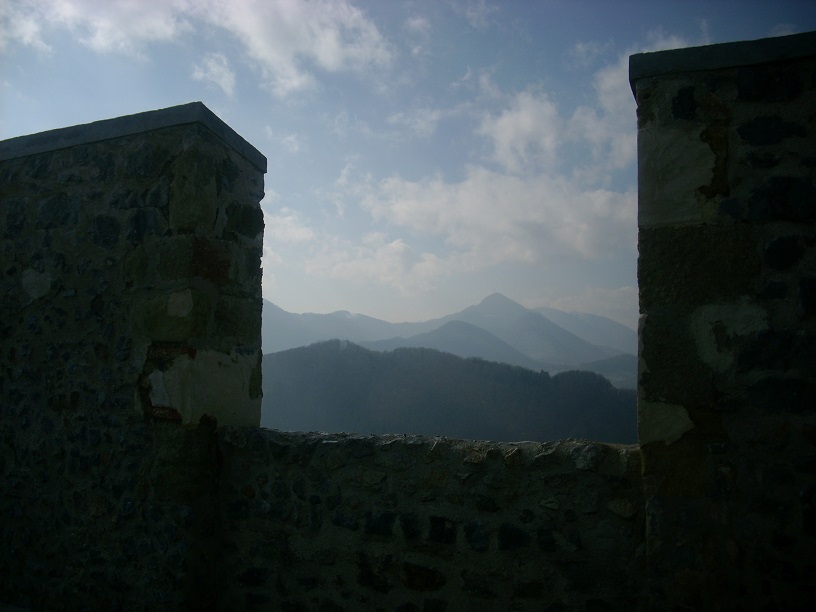
|
|
The Sava River, near Hrastnik. A very pleasant hike on what I feared would be a major highway - shoot, it goes to Trbovlje, hometown of
the "band" Laibach! - but proved to be exactly the opposite. At one point, in serene rural emptiness, I came to a traffic signal. There was
no intersection. It was just a red light at the edge of a pasture. There were two extra signs to explain it, almost. One, illuminated,
said "Wait for the green." The other promised the wait would never be more than 5 minutes. It was what it was because just beyond it,
the road became a single lane wedged tightly between the river and the railway.
|
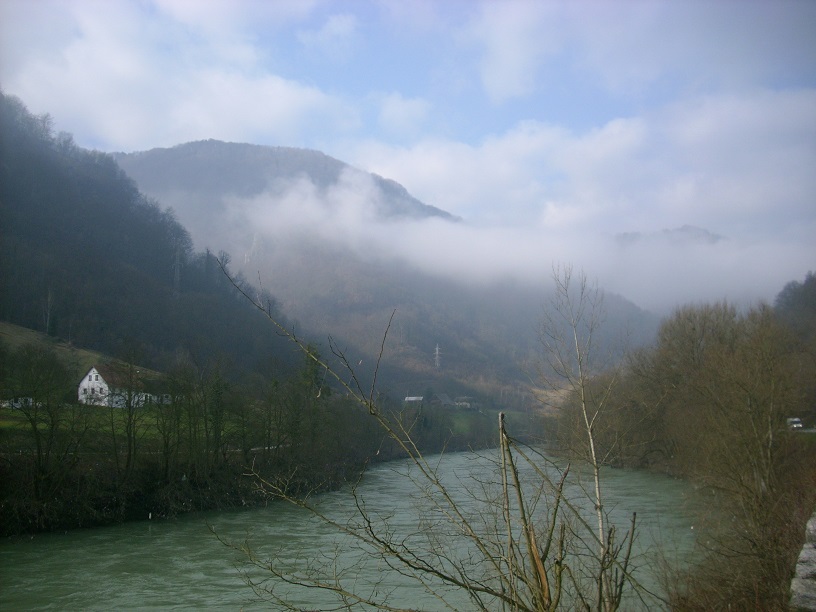
|



























